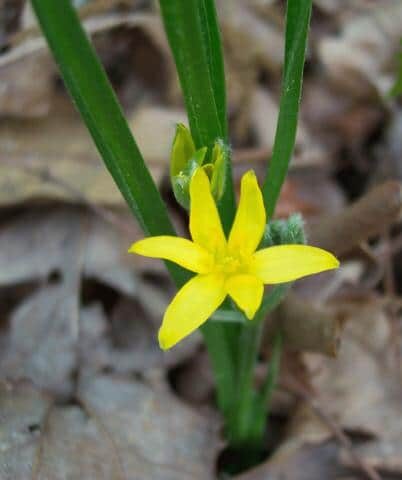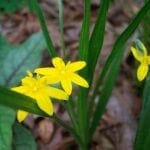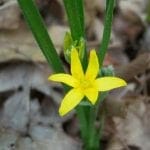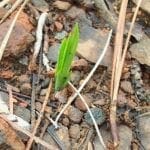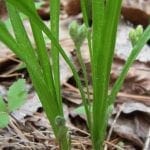- Flowers
- Flowers are borne low
- Early foliage
- Foliage with flower buds
Scientific Name:
Hypoxis hirsuta
Common Name:
Yellow Stargrass
Scientific Name Pronounciation:
hy-POK-sis her-SOO-tuh
Plant Type:
Perennial
Plant Hardiness Zones:
3-9
Plant Hardiness Zone(s):
Usual Size:
4-18 in. H X 6-10 in. W
Flower:
Star-shaped bright yellow flowers
Bloom Time Notes:
Spring
Leaf:
4-8 inches long; hairy; grass-like
Fruit:
Elliptic capsules with round black seeds
Wildlife:
Natural Habitat:
Fields; glades; open woods.
Propagation:
In summer, carefully divide small corms on mature plants; seed collection is a challenge since every pod ripens individually.
Bloom Time:
Sun or Shade:
Companion Plants:
Cultural Notes:
Yellow Stargrass (Hypoxis hirsuta) grows in sun to partial shade; moist to slightly dry conditions; soil can contain loam or some rocky material; can spread to form loose colonies. One of our longest blooming wildflowers; multiplies by corms; self seeds close to the plant to form a nice groundcover.
Transplanting tips: Yellow Stargrass grows from small corms, often in very hard dry soil; until the yellow flowers appear the plant looks like grass.
Other Common Names: Common Goldstar
Other Scientific Names: Hypoxis decumbens, Ornithogalum hirsutum

